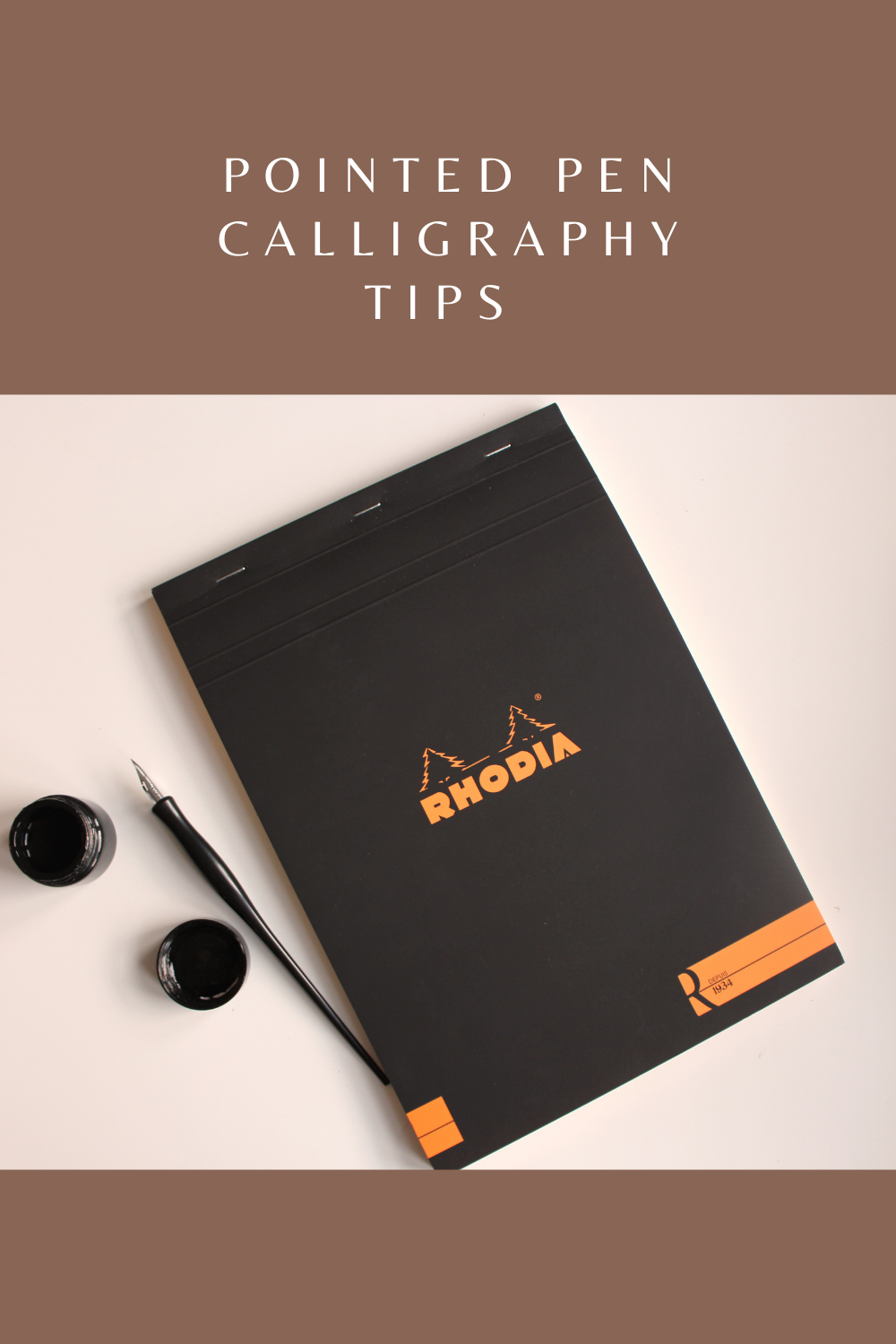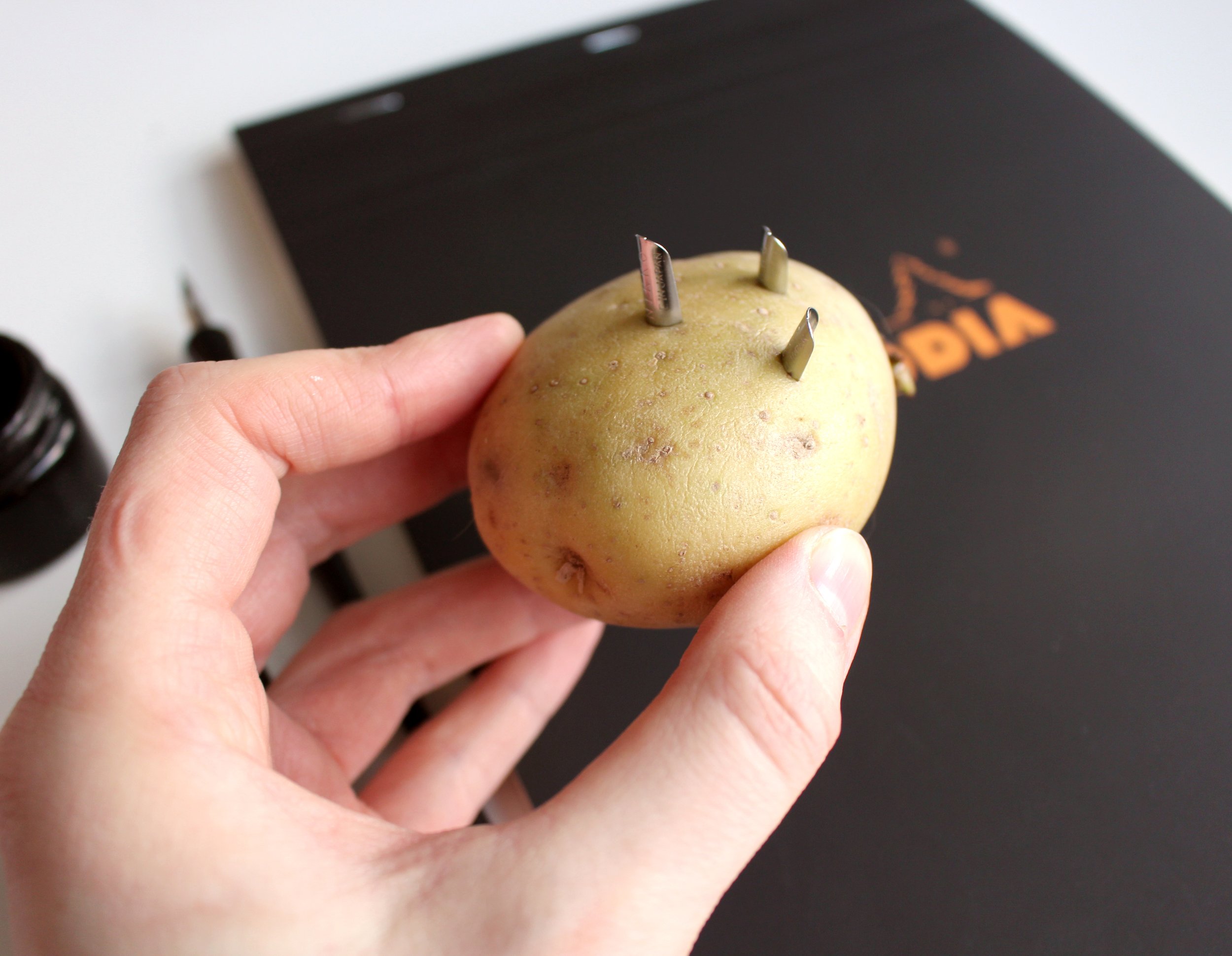Pointed Pen Calligraphy Tips - Scratchy Nibs
Hello calligrafriend!
I’ve put together this blog post to help you learn and navigate your calligraphy journey. Perhaps you’ve started learning and have been feeling a bit frustrated, running into issues like ink bleeding, nib catching, inconsistent ink flow and have been thinking of giving up? Don’t just yet. It’s the natural learning process and the more issues you encounter and work through, the better and more experienced you will become!
I’ll be guiding you through some troubleshooting tips, focusing on nib scratchiness in particular. It’s a common issue and can really stop you from enjoying your learning process before you even give it a real chance.
What is nib scratchiness? If you’ve noticed that your nib is catching paper, getting stuck on the upstrokes, splattering ink and making the flow of your upstrokes difficult then you’ve been there and know exactly what I’m talking about.
What is causing it?
First of all - it’s not you, it happens to almost every beginner calligrapher. BUT, there are some easy ways to move past this stage quicker.
Brand new nibs - all new nibs come with a manufacture coating on them to protect them during transit. They usually have an oily coating that needs to be removed prior to lettering to allow a good ink flow.
There are several ways to do it, and you can watch a little tutorial here. But the easiest way to treat your nibs is to stick them in a potato for about 20 minutes and then wash them with clean water.
Potato starch will make them squeaky clean, ready for lettering.
I recommend Nikko G nibs for beginners.
Always inspect your nib thoroughly. They can get damaged upon handling and washing. I’ve dropped mine a few times on hard floors and they got completely bent. Inspect the tines of the nib to make sure both sides look the same and that they are not overlapping. Damaged nibs won’t glide easily and will catch your paper during upstrokes.
Make sure there is nothing caught in your nib. Always have a bit of tissue and some water nearby to clean your nib from time to time. Paper fibres can often get stuck in your nib affecting the flow on your upstrokes in particular.
Once that’s ruled out, make sure you’re holding your pen correctly.
Point the tip of the nib straight down without rotating it to either side. Lower down your pen holder to a 45 degree angle, rest the side of your hand on your desk and make sure your elbow is always supported.
A common issue is holding your pen holder too high up, it usually makes it harder to do upstrokes as it creates more resistance.
Try a different pen holder - there are two types of pen holders - straight and oblique. Straight are usually recommended for lefties while right handed people usually like to switch between both. Oblique pen holders make it easier to letter at a slant and have a little flange coming out of the side. I highly recommend trying out both, you might be better friends with one or the other. I personally find oblique pen holders easier to manoeuvre, they just fit my grip and hand better, it’s quite individual. I always tell my students that it’s good to start learning with a straight one and then have a go with an oblique one after some of the basics have been covered.
There is a brand of pen holders called MOBLIQUE, they’re quite popular as you can use them as both oblique and straight. They come in beautiful colours too, always makes me want to pick it up when I see mine on my desk.
Paper - this is a big one. Using textured paper might not be the best idea and it can really affect your lettering flow. Always aim for smooth paper or card, my favourites are Rhodia Notepads and HP colour choice paper. Copy paper usually can’t handle the amount of ink coming out of the pen, so it will likely bleed. Try to go above 160gsm weight when looking for practice papers.
Ink - it can be a real game changer! Make sure you’re using a good quality ink, some of my favourites are Sumi or Higgins. You will also find my hand mixed pigment based inks useful if you’d like to add a bit of colour to your projects. Try a few brands and see what works best with your paper.
You might need to thicken or dilute your ink if the flow doesn’t feel right. If your ink is getting stuck in the nib and doesn’t seem to flow through, and your upstrokes are skipping, try adding a few drops of water and seeing if the consistency improves. Or if it feels very runny usually a few drops of Gum Arabic will fix the issue. Remember that inks will thicken over time, especially if you’re having long practice sessions and your pot of ink is left without lid. The water will evaporate, and you will notice a change in consistency.
Pressure - controlling pressure is probably the most difficult aspect of learning calligraphy. A very common reason for scratchy nibs is heavy pressure on the upstrokes. Try relaxing your whole arm, it’s worth shaking out your hands and doing some stretchy exercises to help you get into a relaxed state prior to lettering. Practicing without ink on a blank page is a great way to get used to the relaxing hand movements. I usually like to do big circles on the page without any ink to warm up my hand, give it a go!
Once you’re fully relaxed, try applying lighter pressure on every upstroke, barely touching the page, focusing on the very tip of your nib.
Remember, the more you practice the easier it will get. It’s completely normal for your upstrokes to look shaky or inconsistent at first. Keep trying, keep doing warm ups and alphabet practice until you feel comfortable lettering words and phrases.
Some of the links in this blog post are affiliate links. This means I may earn a small commission if you make a purchase through these links, at no extra cost to you. Your support helps keep this blog running. Thank you!
Did you know that by signing up to my Blooming Calligraphers membership you'll get instant access to the exclusive worksheet library, engaging calligraphy and watercolour projects, and fresh monthly content? Become a member today, sign up here
Let's connect:
Instagram: http://instagram.com/creativefeeldesigns
E-mail: hello@creativefeeldesigns.com
www.creativefeeldesigns.com






